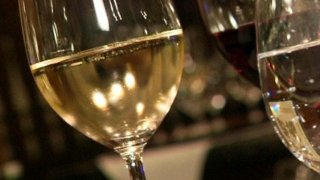A short history of Viennese wine
The history of wine-growing in Vienna is closely linked to the city's history. Celts, Illyrians, and the Roman legions – they all produced wine in Vienna. The first documentary mention of vineyards in Vienna dates back to the 12th century. Today, Vienna is perceived worldwide as prominent wine region, which is unique for a large city.

Wine culture is known in Vienna since Roman times.
Should we believe history books or the Viennese songs? Did Emperor Probus introduce wine to Vienna or had viticulture existed long before that? Both versions are true. As a matter of fact, wild grapevines were known at the time of the Celts who already produced wine from this original grape.
Grafting branches were introduced at Roman times and Emperor Probus promoted viticulture in Vindobona. But why?
Wine in Roman times
A certain amount of wine was part of the Roman legions' salary. This wine was produced in Italy and had to be transported a long way, which was expensive. To save money, Emperor Probus imported grafted grapevines from Italy and used them to cultivate Celtic wine.
Viticulture began to expand after Roman times. Wine was even grown in the very city centre, for example close to Schottentor, and of course outside the city walls. A small vineyard has remained on Schwarzenbergplatz. Vienna’s smallest vineyard is run by the winery "Mayer am Pfarrplatz". They mainly produce Gemischter Satz, i.e. wine from a vineyard planted with two or more different grape varieties that are vinified together. This wine has gained DAC status.
From the Middle Ages
From the Middle Ages, viticulture existed mainly in the suburbs and outskirts. The wine quality differed. At the time of Emperor Frederick III wine was so sour that the Emperor prohibited drinking wine as he was afraid that drinking wine could harm people. This wine was called "cask eater" as it was so sour that it would dissolve the hoops of a cask. It was impossible to pour away this wine as it was believed to be a "gift of god" and people therefore used it to mix mortar for Saint Stephen's Cathedral, which obviously did no harm to the Cathedral.
Wine was sold in numerous cellars, which were called "holes", and in bars. To improve the quality, wine was often mixed with substances such as honey or saffron. Sometimes, harmful substances were added and adulterating wine was therefore prohibited. But people did not always adhere to this.
Serving wine
Wine taverns were transferred to vineyards, which are still the traditional places to serve wine today. A regulation by Emperor Joseph II, which is still in force today, organised the serving of wine in wine taverns.
So, 1784 was the year when the typical Viennese wine taverns were born. Today you can hardly see a difference between a genuine wine tavern (Buschenschank) and a restaurant-type wine tavern (Heurigenrestaurant).
The bunch of pine tree branches, the sign which refers to Emperor Joseph's regulation, is an indication to recognise a typical Viennese wine tavern.
Wine recession
A large recession hit viticulture in the 19th century. The phylloxera destroyed almost the entire stock of grapevines. Baron Babo, who established a viticulture school at Klosterneuburg, came to rescue wine growing. He imported rootstock from America, which was resistant against phylloxera, and started a new era of viticulture.
The beginning wine recession in the 1980s was prevented by two gentlemen of almost the same name. One was the former Vice-mayor of Vienna, Hans Mayr, the other one was the President of the Vienna Agricultural Chamber, Franz Mayer, who started a replanting project. Vineyards were revitalised and wine taverns became more popular again.
Today, viticulture is an important business branch in Vienna thanks to targeted protection measures by the City of Vienna, such as declaring vineyards specially protected areas. These measures preserve a cultural landscape which is agriculturally used and also give new momentum to tourism.
It is also unrivalled worldwide that the City of Vienna has had its own winery for more than 100 years. Winery Cobenzl Vienna consists of 60 hectares of vines and is one of Vienna’s most important wineries. They focus their production on traditional Viennese varieties associated with state-of-the-art, gentle wine technologies.
Further information
wien.gv.at-English Edition
Contact form
